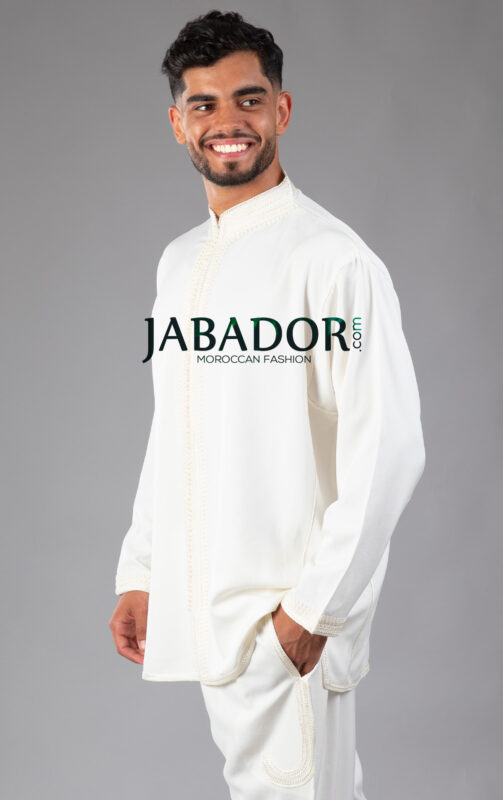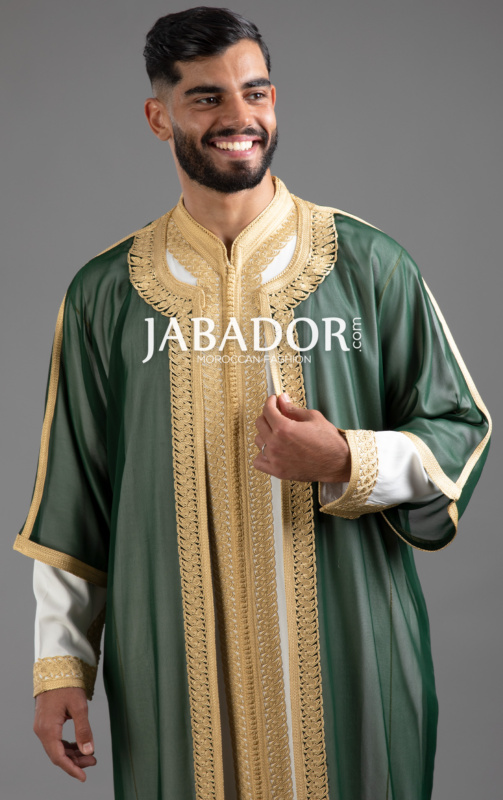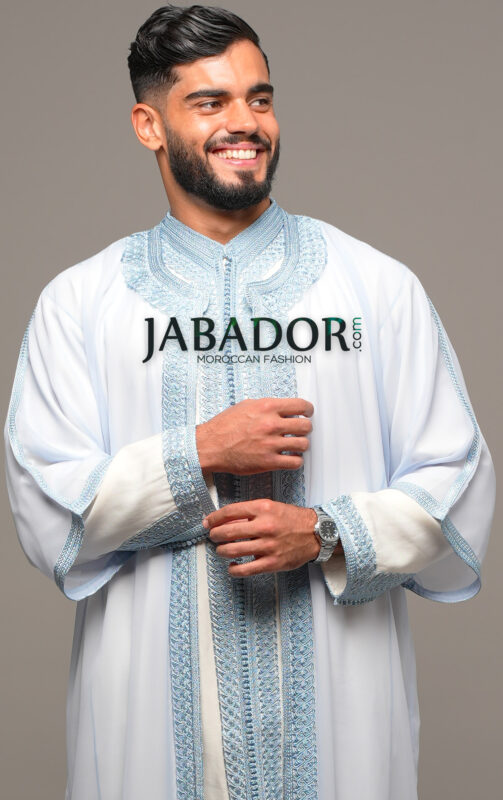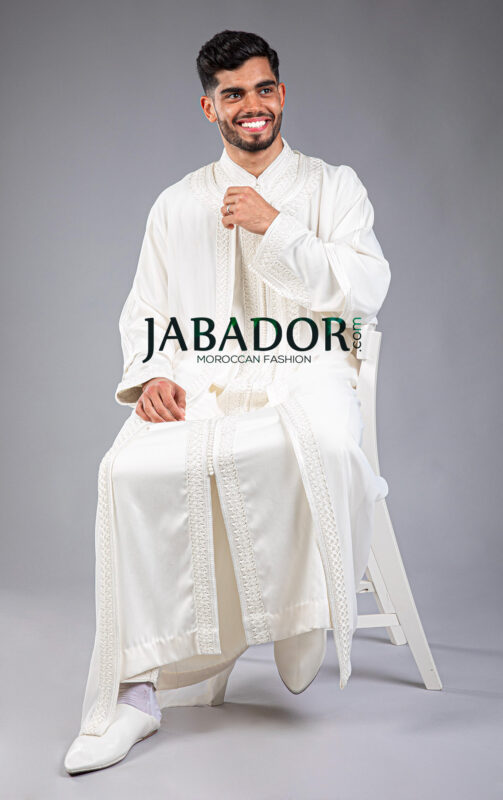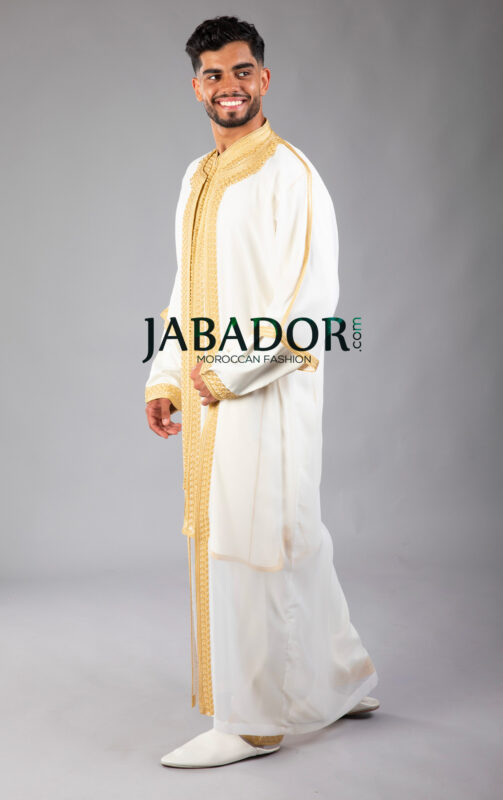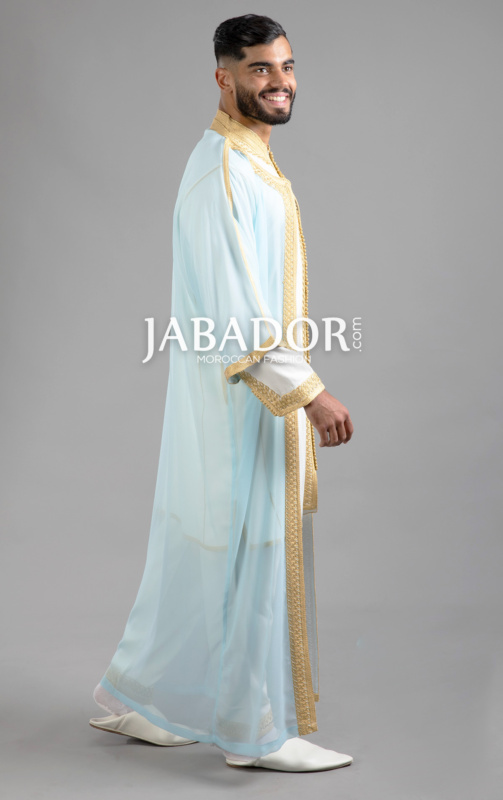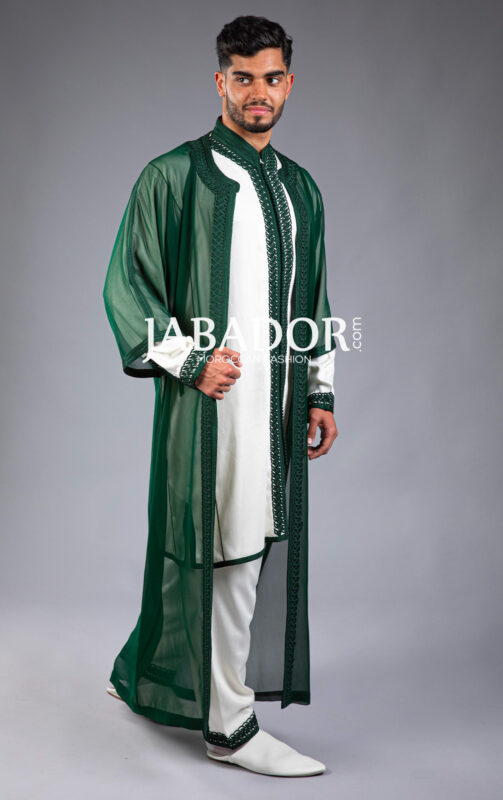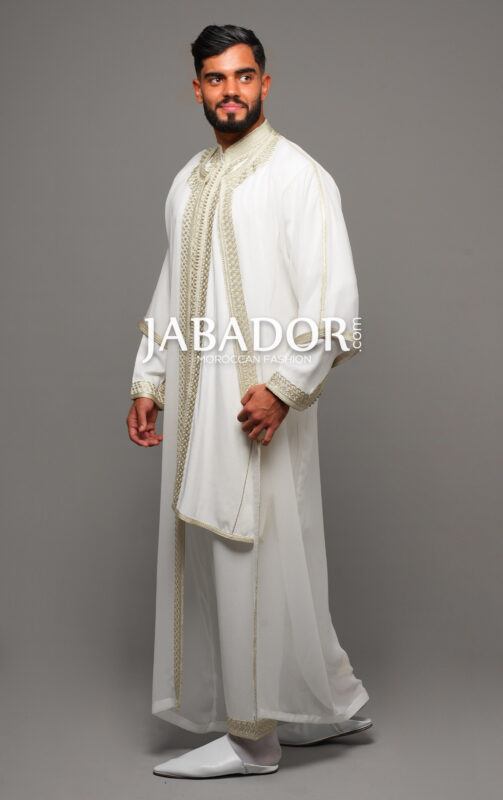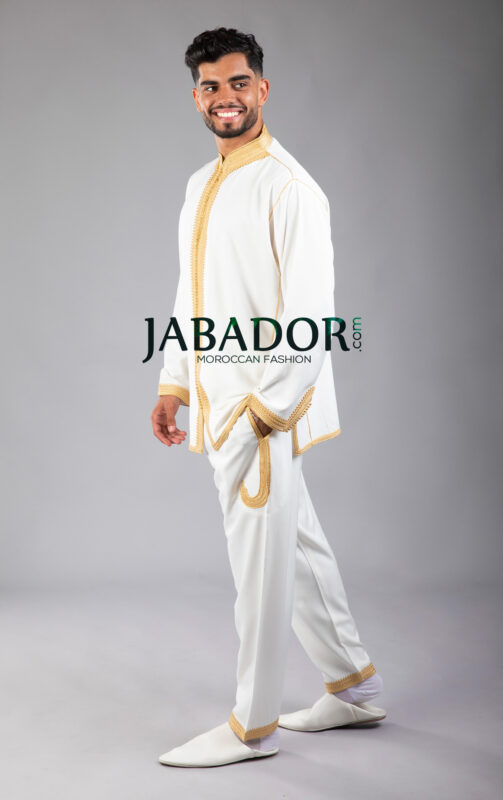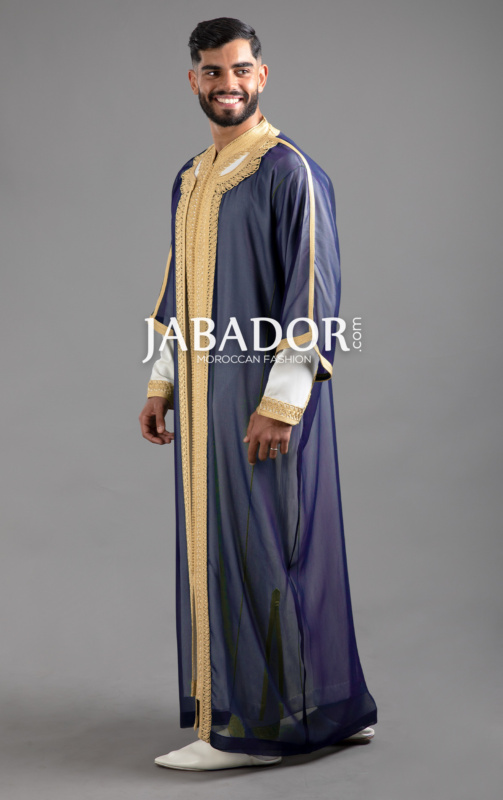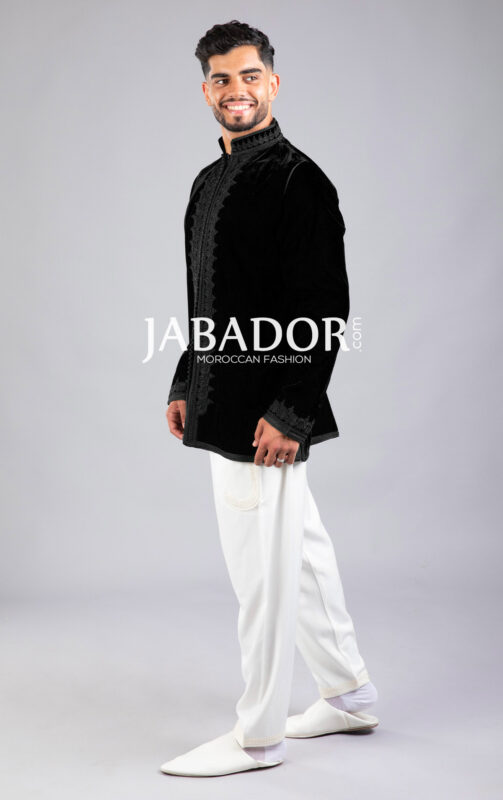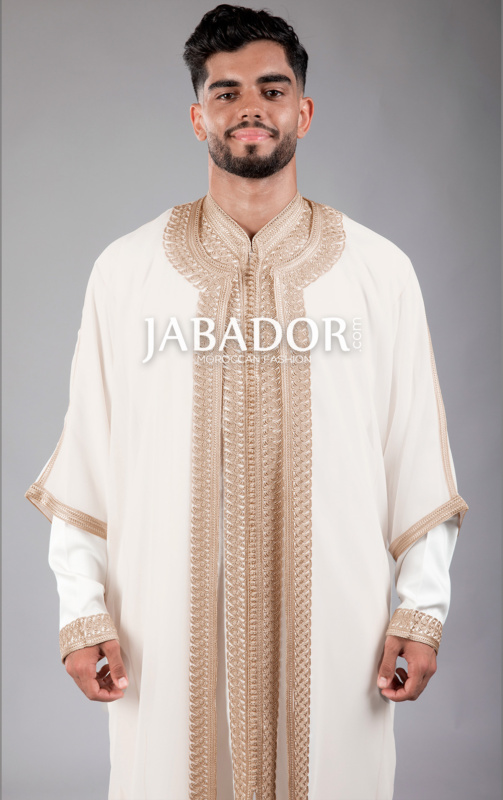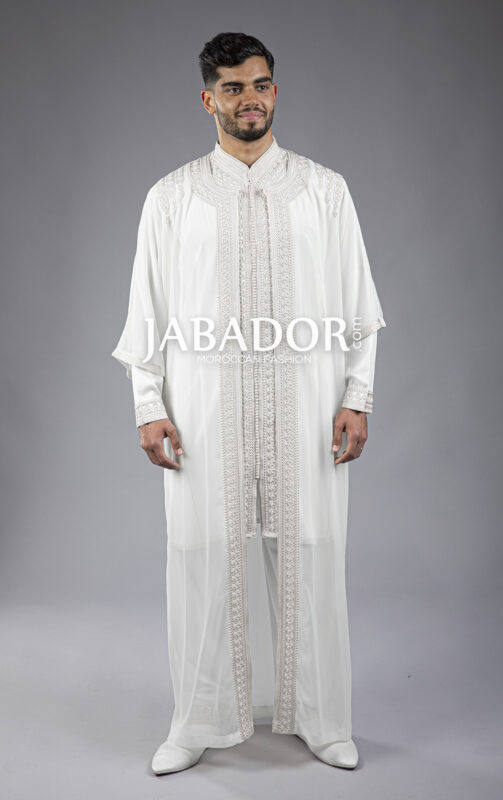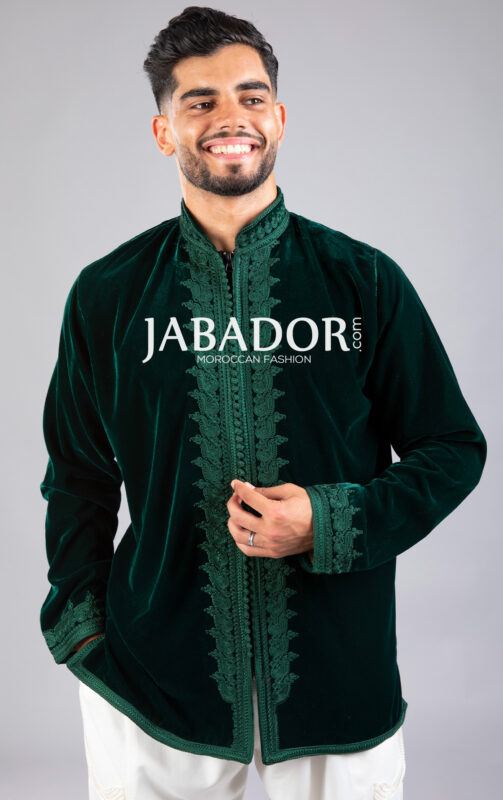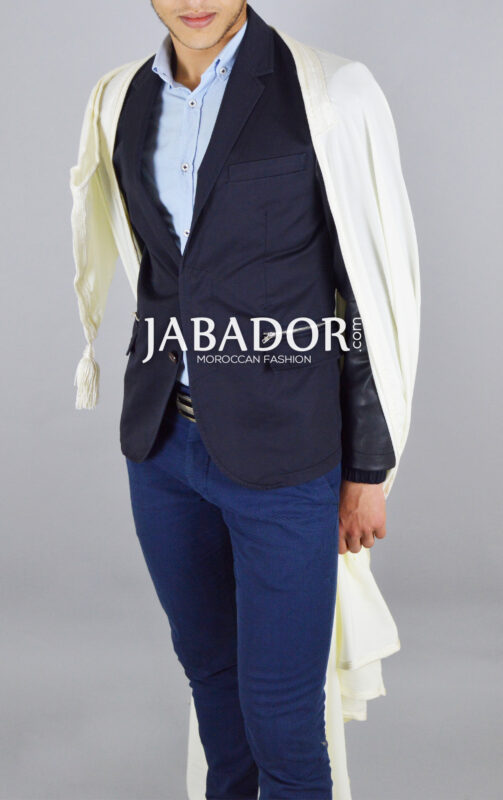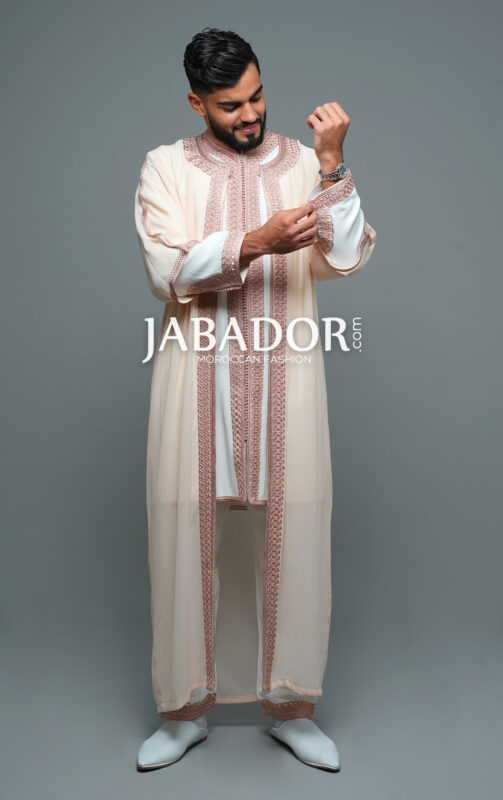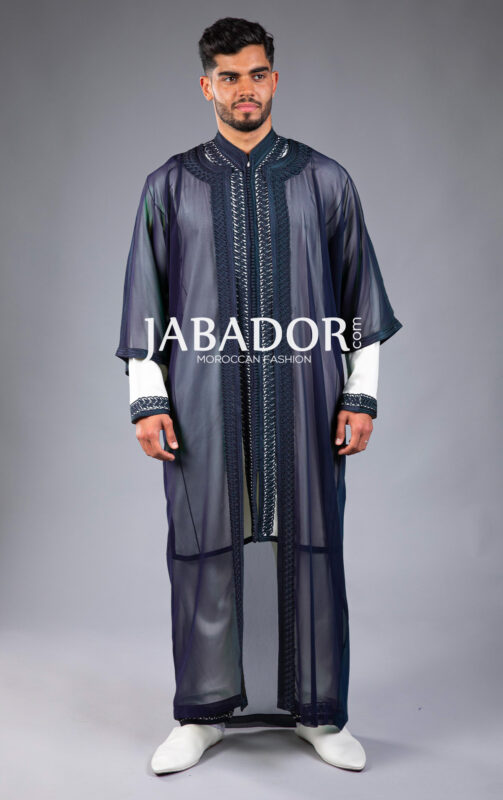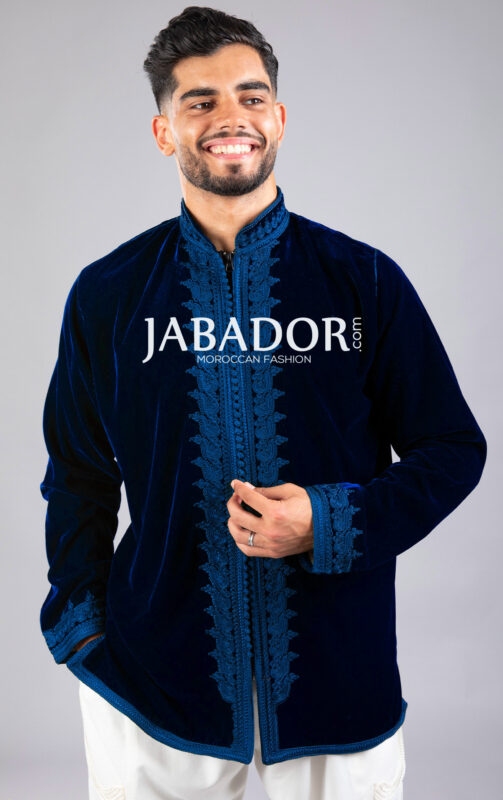Jabador
Origin of the Moroccan Jabador
The Jabador finds its origins in Morocco and again it was first worn by men.
It was traditionally made up of a sarouel (baggy trousers) and a long, loose tunic open at the sides.
Jabador today...
Today, the principle of the Jabador is still the same, with the difference that the classic trousers replace the Aladdin, with a more or less long tunic on top, embroidered, cut from a fabric often identical to the trousers.
For men, the colours vary in pastel shades, from white to blue through beige or green as well as black.
Generally quite sober (just a few embroideries on the sleeves and collar). The cut has also evolved, and the shapes are sometimes more pronounced.
What's the occasion to wear a Jabador?
Perfect to celebrate a Wedding, Hlel or Khotba, it also brings a traditional touch to the groom.
It is also worn during Ramadan and during Muslim religious holidays (Aid El fitr and Aid el Adha or Mawlid), especially for prayers at the mosque.

